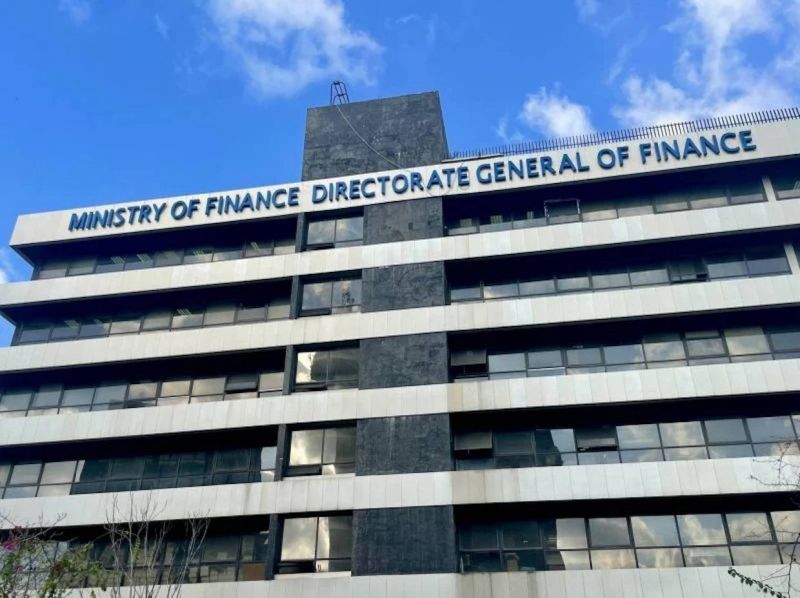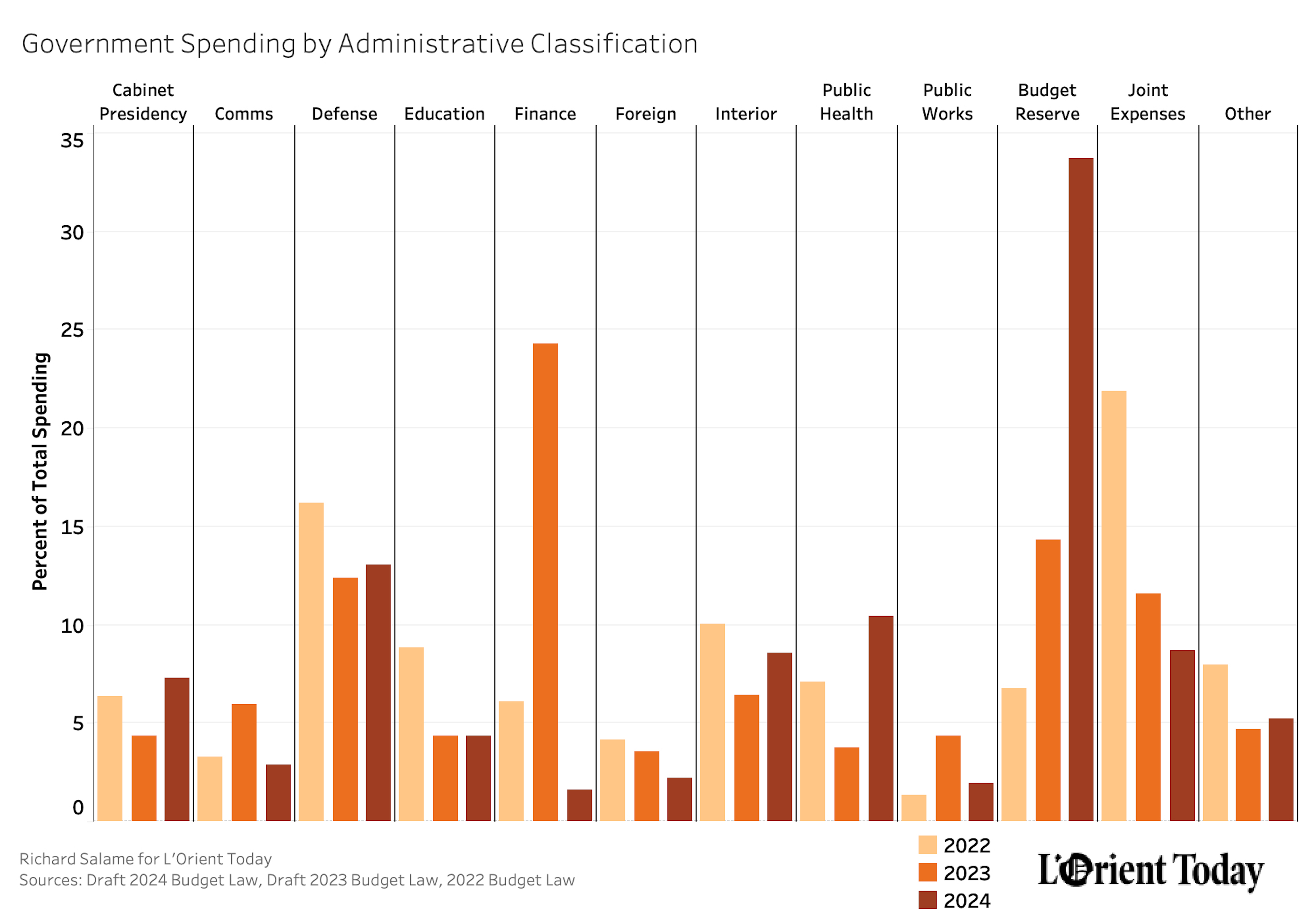
Lebanon’s Ministry of Finance headquarters, in Beirut. (Credit: Philippe Hage Boutros/L'Orient-Le Jour)
BEIRUT — Lebanon’s government is considering two draft budgets simultaneously. Less than three months from the end of 2023, there is the 2023 budget. Then there is the 2024 draft, a budget that could be adopted without the 2023 budget in place, repeating the experience of 2021, a year the budget was skipped altogether.
Fiscally, the two draft budgets appear generally similar to past documents — they contain a raft of revenue-raising measures intended to fund immediate spending needed to keep the state afloat.
The 2023 budget envisions spending of LL199.31 trillion ($2.33 billion at the current sayrafa rate of LL85,500 per dollar) against revenues of LL147.74 trillion ($1.73 billion), a deficit of around $600 million.
The 2024 budget constitutes a dramatic spending increase over that of 2023, including LL300.52 trillion ($3.51 billion) in spending against LL258.78 trillion ($3.03 billion) in revenues, a deficit of around $480 million.
The two budgets are, together, a substantial rebound in government spending following 2022’s expenditure of just LL40.87 trillion ($1.39 billion at the sayrafa rate in effect on the day it was published).
If the 2023 and 2024 budgets are passed in something like their current forms, they will render 2022 the low point in state expenditure over the crisis period so far. Expenditures are still miles away from pre-crisis levels.
State spending collapsed almost entirely from a 2018 high of $17.79 billion, falling to 2022’s $1.39 billion — a decrease that made itself felt in the state’s inability to provide public and social services or pay its employees.

Inside the 2023 and 2024 draft budgets
Continuing a trend starting in 2019, personnel expenses will continue to dominate state spending under the two draft budgets, making up 59.73 percent of spending in the 2023 budget and 59.28 percent in the 2024 budget.
From 1995 to 2017 personnel expenses were generally stable, ranging between a quarter and a third of state spending. A 2017 law increasing the salary scale for public sector workers is argued to have begun pushing this number upwards, reaching almost 40 percent in 2019.
With the onset of the economic crisis, the figure jumped by 10- and then 20 percentage points as the state stopped making debt payments and radically cut spending on fuel for Electricite du Liban, prompting the infamous energy crisis of the last few years.
Despite the large share of state spending that will be going to the salaries and benefits of public sector workers, the Public Administration Employees Union has blasted the 2024 draft budget saying in a statement “There is nothing new in terms of correcting, even partially, salaries, wages, and compensations, and not even an apology for not intending to return even a small part of our stolen rights.”
Despite a seven-fold lira increase in civil servant salaries, and a six-fold increase in salaries in the military and security forces, compensation is still far below pre-crisis levels due to the 98 percent depreciation of the currency.
Union leader Nawal Nasr told L’Orient Today the association’s efforts to have the draft law changed will focus on Parliament. “We will do everything we can, and the rest is up to God,” she said, “and some consciences.”

In terms of how spending is being distributed across ministries, the Finance Ministry is poised to experience a massive increase in its budget allocation in 2023 — from $82 million to $566 million — which will be entirely reversed in 2024 to a level below its current financing. It will be joined by the communications, foreign affairs, and public works ministries in having a considerably reduced 2024 budget compared to 2023.
Possibly compensating for their shrinking 2024 budgets could be the state’s budget reserve. This reserve is an amount not allocated to a particular ministry in a given term, allowing a finance ministry to allocate funds at a later time, or to save one year’s reserve funds to help cushion future budget shortfalls.
The government plans to expand the budget reserve enormously, from $91 million in 2022 to $335 in 2023 and $1.18 billion in 2024. By this plan the budget reserve will expand from just 6.76 percent of the budget in 2022 to a full 33.71 percent in 2024.
In its public expenditure management guidelines the IMF states that a typical government budget will have a planning reserve of one or two percent of total expenditure and a contingency reserve — funds kept aside for emergencies and unforeseen circumstances — of two or three percent.
The IMF notes that if the reserve is too large, “a bidding process from ministries may quickly set in.” Reserves larger than three-to-five percent of spending can be justified in “very specific circumstances… [such as] a plan to liquidate payment arrears, whose aggregate size is not yet clear.”
It is not yet clear why the Lebanese government has decided to place a third of its future spending into the reserve category.
The labor, public health, and social affairs ministries will spend one year in budget purgatory, slashed from their already low current funding levels, before rebounding in 2024, in the latter two cases to levels significantly higher than they currently enjoy.
Meanwhile the interior and defense ministries, among the state’s largest employers, will see a continuous upward trajectory over the next two years, ending up with roughly double their current budgets.